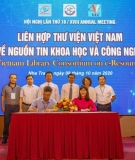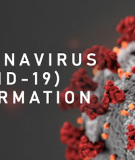Tài liệu Thư viện số
- Quy chuẩn kỹ thuật Quốc gia (305 )
- Kiến trúc (204 )
- Hàng hải - Máy tàu biển (336 )
- Cơ khí - Đóng tàu (1167 )
- Điện - Điện tử (1158 )
- Công trình (1059 )
- Công nghệ thông tin (1128 )
- Kinh tế (821 )
- Ngoại ngữ (254 )
- GDQP - Lý luận chính trị (196 )
- Cơ sở - Cơ bản (415 )
- Luận văn - Luận án (844 )
- Đề tài khoa học (43 )
- Tài liệu hội thảo (8 )
- Văn bản - Biểu mẫu (14 )
- Tài liệu khác (267 )
Danh mục TaiLieu.VN
- Mẫu Slide Powerpoint
- Luận Văn - Báo Cáo (344720)
- Kinh Doanh Marketing (65512)
- Kinh Tế - Quản Lý (48934)
- Tài Chính - Ngân Hàng (55898)
- Công Nghệ Thông Tin (142209)
- Tiếng Anh - Ngoại Ngữ (47066)
- Kỹ Thuật - Công Nghệ (134345)
- Khoa Học Tự Nhiên (107174)
- Khoa Học Xã Hội (82451)
- Văn Hoá - Nghệ Thuật (54408)
- Y Tế - Sức Khoẻ (173915)
- Nông - Lâm - Ngư (62504)
- Kỹ Năng Mềm (29016)
- Biểu Mẫu - Văn Bản (27610)
- Giải Trí - Thư Giãn (51994)
- Văn Bản Luật (198854)
- Tài Liệu Phổ Thông (402015)
- Trắc Nghiệm Online (213578)
- Trắc Nghiệm MBTI
- Trắc Nghiệm Holland
Tin tức nổi bật
Kết quả 6721-6732 trong khoảng 8220
-
Lecture Network+ Certification: Chapter 3 - Microsoft Press
Chapter 3 - Network connections. Chapter summary: Use the Network And Dial-Up Connections window to manually install and configure the basic Windows 2000 networking components; use the Local Area Connection Properties dialog box of a network interface adapter to install, remove, and configure the TCP/IP networking components for that specific network interface adapter; use the Internet Protocol (TCP/IP) Properties dialog box to configure basic...
17 p vimaru 29/04/2016 2106 19
-
Lecture Network+ Certification: Chapter 5 - Microsoft Press
Chapter 5 - Data-link layer protocols. Chapter summary: Supports multiple cable types and speeds, uses the CSMA/CD MAC mechanism to detect collisions, uses a logical ring topology, uses the token passing MAC mechanism, uses a double ring or star topology, uses the token passing MAC mechanism, runs at speeds up to 11 Mbps, uses the CSMA/CA MAC mechanism.
39 p vimaru 29/04/2016 1617 16
-
Lecture Network+ Certification: Chapter 2 - Microsoft Press
Chapter 2 - Network hardware. The layered model that dominated data communication and networking literature before 1990 was the Open Systems Interconnection (OSI) model. Everyone believed that the OSI model would become the ultimate standard for data communications - but this did not happen. The TCP/IP protocol suite became the dominant commercial architecture because it was used and tested extensively in the Internet; the OSI model was never...
27 p vimaru 29/04/2016 1547 7
-
Lecture Network+ Certification: Chapter 1 - Microsoft Press
Chapter 1 - Networking basics. This chapter has several objectives: to give a brief history of the internet, to give the definition of the two often-used terms in the discussion of the internet: protocol and standard, to categorize standard organizations involved in the internet and give a brief discussion of each, to define internet standards and explain the mechanism through which these standards are developed, to discuss the internet...
25 p vimaru 29/04/2016 1525 19
-
Lecture Network+ Certification: Chapter 4 - Microsoft Press
Chapter 4 - Networking software. Chapter summary: The Windows NT, Windows 2000, and UNIX operating systems include both server and client functionality; Novell NetWare is strictly a client/server network operating system; Windows NT and Windows 2000 were designed to provide application services and file and print services; a client is a software component that enables a computer to access server resources;...and other contents.
39 p vimaru 29/04/2016 1910 9
-
Lecture Network+ Certification: Chapter 6 - Microsoft Press
Chapter 6 - Network layer protocols. Chapter summary: Network layer protocols are responsible for end-to-end communications across the network; IP is a connectionless protocol that encapsulates transport layer data into datagrams; IPX is a proprietary standard that performs routing, addressing, and protocol identification; NetBIOS Extended User Interface (NetBEUI) is used by small Windows networks for LAN networking; AppleTalk provides basic...
23 p vimaru 29/04/2016 1410 15
-
Lecture Network+ Certification: Chapter 8 - Microsoft Press
Chapter 8 - TCP/IP fundamentals. Chapter summary: The TCP/IP protocols were developed to support systems that use any computing platform or operating system; the TCP/IP protocol stack consists of four layers: link, internet, transport, and application; IP uses the ARP protocol to resolve IP addresses into the hardware addresses needed for data-link layer protocol communications;...and other contents.
32 p vimaru 29/04/2016 1467 16
-
Lecture Network+ Certification: Chapter 7 - Microsoft Press
Chapter 7 - Transport layer protocols. Chapter 7 provides knowledge of TCP, UDP, SPX, and NCP. This chapter includes contents: Connection-oriented protocol; provides packet acknowledgment and flow control, much like TCP; used for NetWare file sharing traffic, among many other functions
27 p vimaru 29/04/2016 1367 15
-
Lecture Network+ Certification: Chapter 11 - Microsoft Press
Chapter 11 - TCP/IP configuration. In this chapter, students will be able to understand: Routers receive packets and use the most efficient path to forward them to their destinations, complex internetworks can have redundant routers that provide multiple paths to the same destination, routers store information about the network in a routing table,...
23 p vimaru 29/04/2016 1637 6
-
Lecture Network+ Certification: Chapter 9 - Microsoft Press
Chapter 9 - TCP/IP routing. Chapter summary: DHCP assigns IP addresses by using automatic, manual, or dynamic allocation; DNS resolves host and domain names into IP addresses; WINS resolves NetBIOS names into IP addresses; ping tests whether one computer running TCP/IP can communicate with another computer on the network;...and other contents.
37 p vimaru 29/04/2016 1548 11
-
Lecture Network+ Certification: Chapter 10 - Microsoft Press
Chapter 10 - TCP/IP Applications. Chapter summary: Bridges selectively relay packets between network segments, depending on their data-link layer destination addresses; bridges maintain a single broadcast domain and create separate collision domains; switches improve on the function of bridges by forwarding packets only to their destination systems;...and other contents.
22 p vimaru 29/04/2016 1470 4
-
Lecture Network+ Certification: Chapter 13 - Microsoft Press
Chapter 13 - Network security. In this chapter, students will be able to understand: Password policies ensure that users choose effective passwords; user-level security requires a separate account for each user; in share-level security, all users access shares by using the same passwords; a firewall is a hardware or software product that protects a network from unauthorized access, using techniques such as packet filtering, NAT, or proxy...
28 p vimaru 29/04/2016 1572 8
Đăng nhập
Bộ sưu tập nổi bật
























